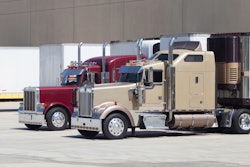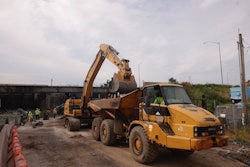Trucking news and briefs for Friday, June 16, 2023:
New NLRB ruling tightens independent contractor classification standards
The National Labor Relations Board, an independent government agency responsible for enforcing U.S. labor law in relation to collective bargaining and unfair labor practices, this week returned to an Obama-era standard for determining independent contractor status under the National Labor Relations Act, overturning a Trump-era standard. The ruling makes it more difficult for a worker to be classified as an independent contractor.
The Board in 2014 announced a new standard for determining worker classification, which it said was a “refinement” of the common-law test that has traditionally been used to determine worker classification. The Board effectively created a new factor for determining independent contractor status -- whether the worker is rendering services as part of an independent business.
The 2014 ruling stated that “the Board should give weight to actual, but not merely theoretical, entrepreneurial opportunity, and it should necessarily evaluate the constraints imposed by a company on the individual’s ability to pursue this opportunity.”
In 2019, the Board overruled the 2014 ruling and rescinded the “refinement,” returning to the traditional common-law test.

[Related: CTA, OOIDA mount new argument against AB 5 contractor law]
Now, in its recent decision, NLRB reinstated the 2014 ruling, saying it “expressly rejected the holding ... that entrepreneurial opportunity for gain or loss should be the ‘animating principle’ of the independent-contractor test.”
The Board further explained that entrepreneurial opportunity would be taken into account, along with the traditional common-law factors, by asking whether the evidence tends to show that a supposed independent contractor is, in fact, rendering services as part of an independent business.
“In today’s decision, the Board returns to the independent contractor test articulated in FedEx II, and reaffirms the Board’s commitment to the core common-law principles that the Supreme Court has determined should guide the Board’s consideration of questions involving employee status,” said NLRB Chairman Lauren McFerran. “Applying this clear standard will ensure that workers who seek to organize or exercise their rights under the National Labor Relations Act are not improperly excluded from its protections.”
The recent ruling was related to a case involving makeup artists, wig artists, and hairstylists who worked at the Atlanta Opera and were seeking to be classified as employees to be able to unionize.
The Owner-Operator Independent Drivers Association wrote in a brief to NLRB last year that it “is aware of, and sympathetic to, the plight of truck drivers who are mistreated by motor carriers,” and added that it appreciates the use of both the common-law test and the entrepreneurial opportunity test to determine worker classification. OOIDA suggested that NLRB modify one or both of the 2014 and 2019 decisions “to find a balance between the potentially open ended or an unreasonably expansive use of the common-law factors and the need to accommodate the innumerable fact patterns in each industry.”
The entrepreneurial opportunity test "should also be recognized as a potential basis, alone, upon which to make a classification decision,” OOIDA added. “But it should not be used in a vacuum when the strong presence of any of the traditional common-law factors, such as control, demand attention. Finally, classification decisions should be based not upon theoretical interpretations of a contract, but on the actual and typical experience between a business and the workers being classified.”
[Related: Trucking groups, owner-ops generally opposed to Biden DOL's contractor rule changes]
I-96 closures planned in Detroit this weekend
Expect delays and detours on Interstate 96 in Detroit this weekend, according to the Michigan Department of Transportation.
Beginning 9 p.m. Friday, June 16, through 5 a.m. Monday, June 19, eastbound and westbound I-96 express and local lanes will be closed in Detroit for bridge demolition and other maintenance work, along with all on and off ramps.
The closings include:
- Eastbound I-96 express lanes will be closed between Outer Drive and I-94
- Westbound I-96 express lanes will be closed between I-94 and M-39 (Southfield Freeway)
- Eastbound and westbound I-96 local lanes will be closed between M-39 (Southfield Freeway) and M-8 (Davison Freeway)
Detours include:
- Eastbound I-96 traffic will take southbound M-39 (Southfield Freeway), then eastbound I-94 to I-96
- Westbound I-96 traffic will take westbound I-94, then northbound M-39 (Southfield Freeway) to I-96
[Related: Pennsylvania gets $3 million to kickstart I-95 repairs]
Dana's new EZ-ID tool for driveshaft parts
Dana Incorporated will host a webinar on Thursday, June 22, at noon Eastern time featuring information about its newDana EZ-ID digital tool and how it can help Dana customers quickly identify and order the correct parts for driveshaft assemblies.
The new application provides a visually based process for promptly identifying part numbers for driveline assemblies that lack product tags or other identification markers. Dana EZ-ID tool simplifies parts ordering through the Spicer ReadyShaft program for next-day direct shipment of complete assemblies.
Dana was recently honored with the MEMA Aftermarket Suppliers Excellence award for the Dana EZ-ID tool, the company said. To register for the new webinar, follow this link.
[Related: Fuel treatments increasingly part of owner-operators' PM routines]









